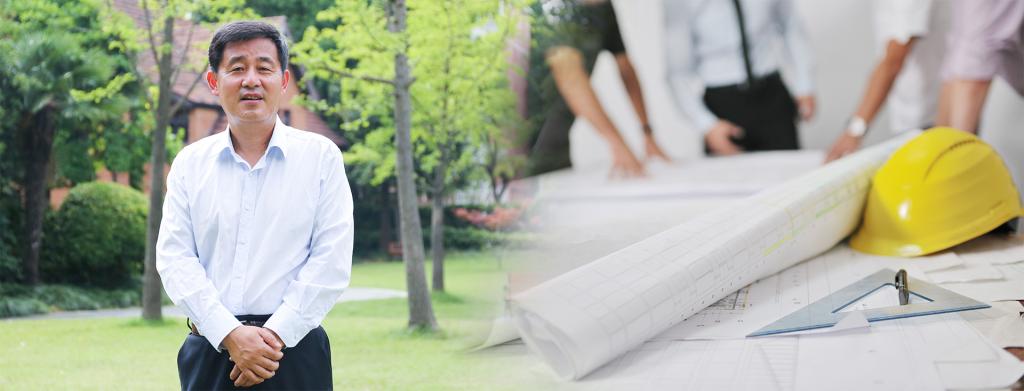Focused on the safety, energy-saving, historical architecture preservation, Professor Liu Weidong from School of Environment and Architecture have renewed “treatment measures”, carried out the reinforcement and reconstruction of ancient architecture by integrated and green means. The team members, who are preforming like “architecture doctors”, make ancient architecture glow with vitality, realizing the healthy diagnosis and sustainable recovering of all-life architecture cycle.

Turning waste into gold by taking advantage of green diagnosis technologies
To settle problems in thermal insulation and heat preservation of ancient architecture, Professor Liu Weidong enlarged limited construction field and improved the construction plan, innovating the energy-saving, reinforcing and reconstructing technologies of fireproof spraying polymer thermal insulation mortal wall, to invent a small-implement injection equipment, coupled with stratified injection technologies, injecting fireproof polymer thermal insulation mortar inside the wall.
The troublesome white pollution was made into hybrid mortar, becoming the heat preservation layer of ancient architecture that not only can support itself, but also reduce and prevent the temperature pressure, and repair normal cracks of brick walls, arming old buildings with protective suits as rain, snow, poisonous gases, ultraviolet were stopped.
In addition, the team also paid attention to a great amount of building waste. “We classify the building waste, producing waste concrete into renewable one, turning the waste into new concrete mortar,” said professor Liu Weidong. The waste was taken from old buildings, and then used for ancient architecture, realizing the integration of demolition, reinforcement, and reuse. For cracked old buildings, “architecture doctors” actively reused wasted concrete and industrial solid waste, inventing concrete materials that not only reduce chances of being cracked, but also recover themselves.
Improve health value of historical architecture against its problems
While wandering on the Shanghai’s street, apart from towered firmiana platanifolia, the most impression left on people are not only the rows of historical buildings, but how to preserve them, and this question has long bothered the industrial experts.
“These are historical cultural buildings, so we have been keeping exploring how to preserve them in a systematic way to retain the city's historical origin, and improve people’s living conditions as well,” said professor Liu Weidong. Back in 2006, Professor LiuWeidong led his team to take part in the renovation of historical buildings at Hujiang International Cultural Park, doing research in each brick of architecture structure. “The ancient architecture should be first diagnosed, and then treated accordingly. So we routinely ran to markets, and finally found some bricks of the same year as ones of old buildings.”
Therefore the team invented building-integrated solar energy use and ground source heat pump system, make solar settings unidentified after the solar energy, keep old buildings remaining the original face, and realizing the idea of solar and architecture integration. Professor Liu said, “Through double-ring solar heating and compound apparatus, we have transferred the solar energy to where the heat is needed, greatly improving availabilities of solar energy within a year.
The team has so far got13 authorized invention patents, and published 87 academic papers, including 42 SCI/EI papers have been completed by the team. Due to enthusiasm and unremitting efforts in technological tackling, a lot of scientific achievements were scored by the team. These architecture doctors, directed by professor Liu, prescribed for the energy-saving and health of ancient architecture. The research achievements have been applied in 5 companies for energy-saving, reinforcement and reconstruction of public buildings, and the construction of energy-saving and green-oriented renovation covers an area of 132.7 square meters. Over the past three years, the direct economic benefits have increased value by 323 million Yuan. These prescriptions are making more and more old buildings more energy-saving and healthier.
“Taking advantage of the industry-university-research-application integration, complementing each other’s resources, the team has been aiming for the National Science and Technology Progress Award, to meet the demands in disciplinary construction and development, contributing a bit to the first-level disciplines authorized to offer degrees of civil engineering” claimed professor Liu Weidong.

 Home
·
News & Events
·
Content
Home
·
News & Events
·
Content

